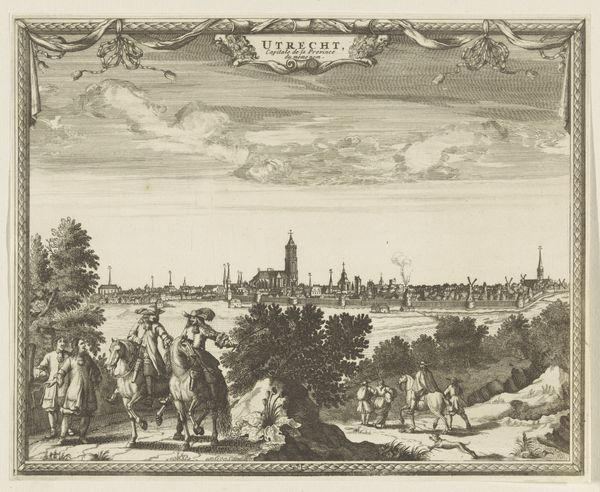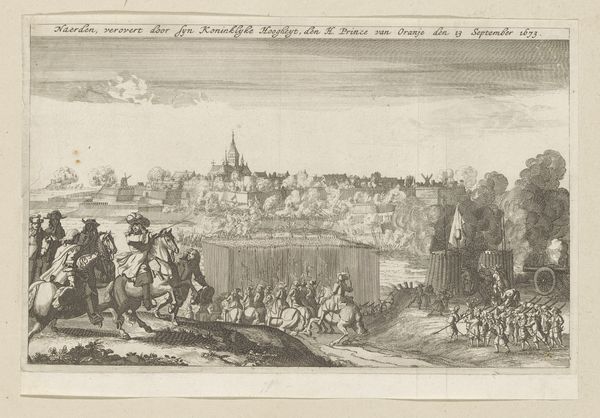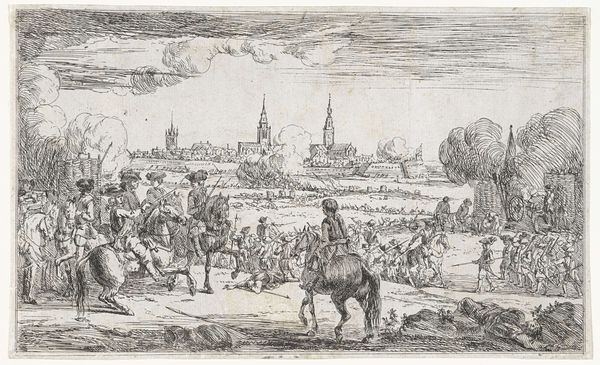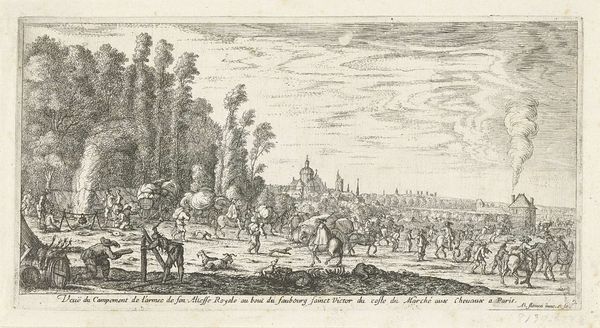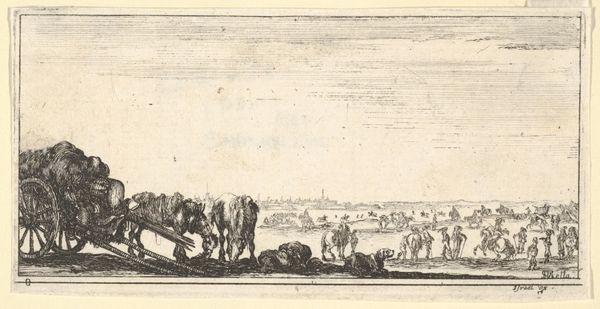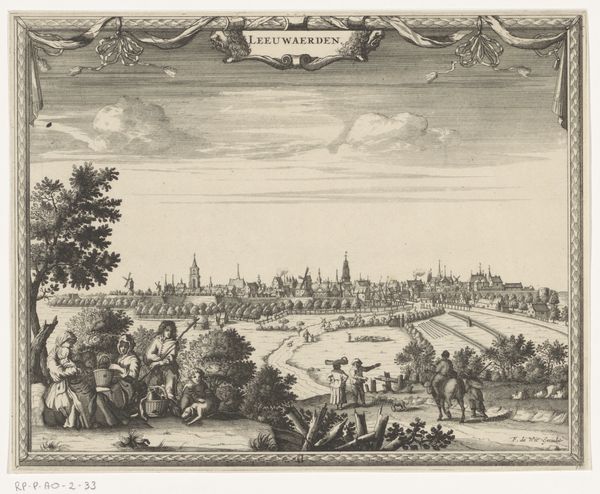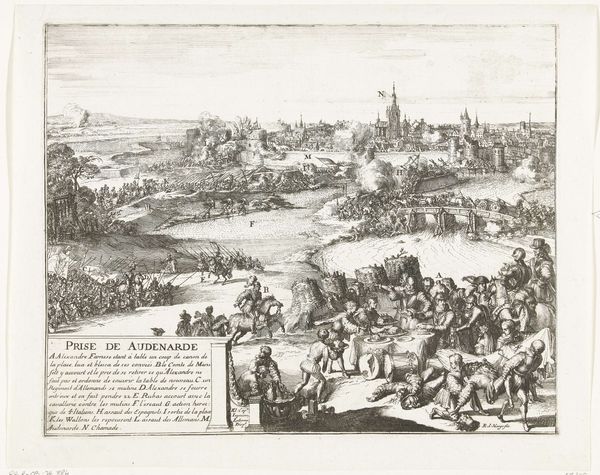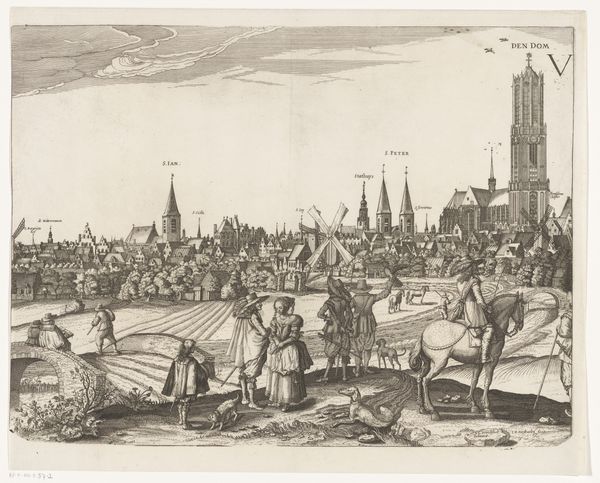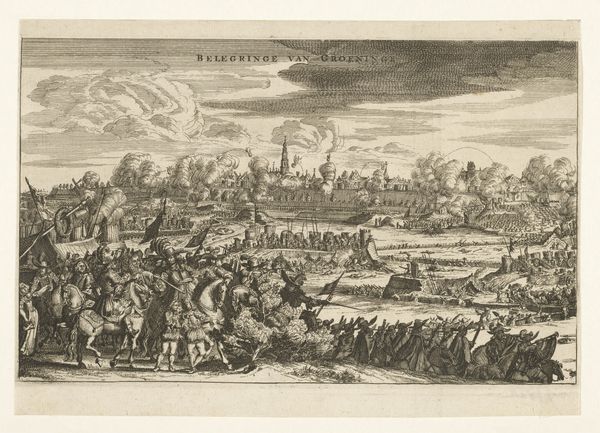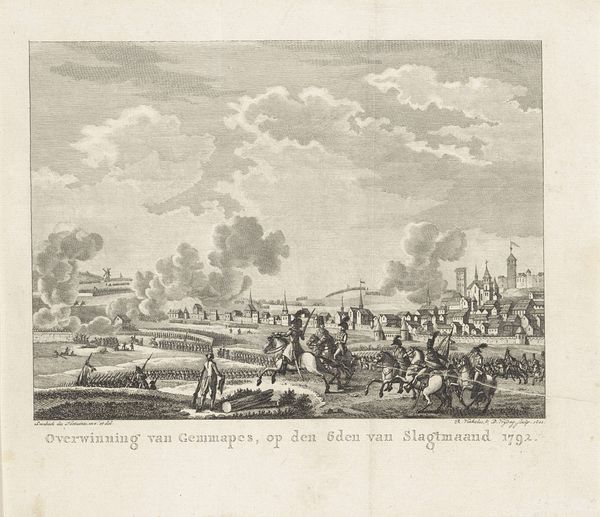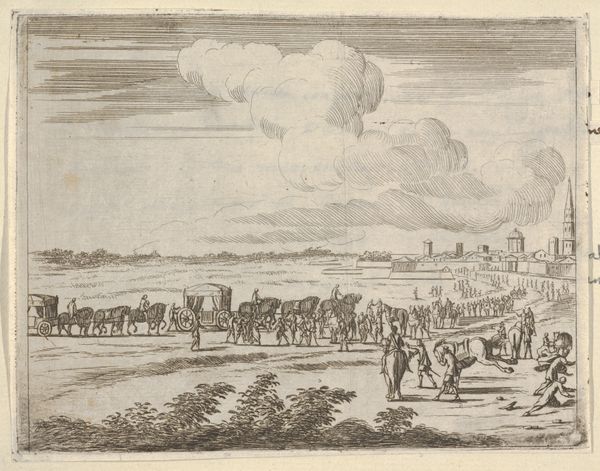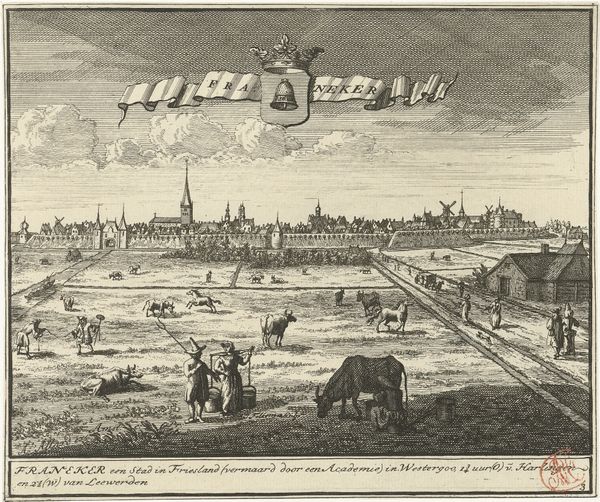
print, engraving
#
dutch-golden-age
# print
#
old engraving style
#
landscape
#
cityscape
#
engraving
Dimensions: height 403 mm, width 544 mm
Copyright: Rijks Museum: Open Domain
Editor: This is "Wandelrit van prins Willem III buiten Den Haag," a print by Johannes Kip from 1686, done in engraving. It gives an expansive view of the city. I'm curious, what stands out to you in this piece? Curator: The immediate thing that strikes me is the mode of production. Engraving itself is a laborious process, reliant on skilled artisans. What kind of societal investment does this represent, dedicating this work to what seems like an aristocratic leisure activity? Editor: That’s interesting, I was mainly seeing a landscape... Curator: But a *produced* landscape! Consider the social relations embedded in the material itself. Copper was mined and refined; tools were forged; and, labor had to be paid for the design and engraving itself, all to commemorate the Prince’s walk outside of The Hague. The foreground, seemingly pastoral with those grazing cows, feels almost deliberately juxtaposed against the city backdrop. Is Kip making a comment on urban versus rural, labor versus leisure? Editor: So you're suggesting it's not just a simple depiction, but perhaps a commentary on social classes through the choice of materials and what's being shown? How would people at the time have viewed it? Curator: I think for them it was a celebration of power, clearly showing how advanced and grand the Dutch Republic has become through commerce. A testament, you might say, etched in copper, showing the tangible reality of political and social order! Editor: I'm now seeing that the engraving's labor-intensive creation underlines the Prince's power and wealth, reflecting broader material conditions of 17th-century Dutch society. Curator: Exactly! Now, how does knowing that affect your perception of this Prince’s leisurely "Wandelrit"?
Comments
No comments
Be the first to comment and join the conversation on the ultimate creative platform.
